I couldn’t resist the pull of the Tramuntana Mountains. I wanted an adventure, but also a quiet break among Mallorca’s olive-draped hills.
As I set off along those winding cobbled trails, pine forests parted to reveal stone terraces and citrus groves. The whole landscape felt wild but strangely welcoming.
Every breath of mountain air reminded me why Mallorca’s heart is a hiker’s dream.
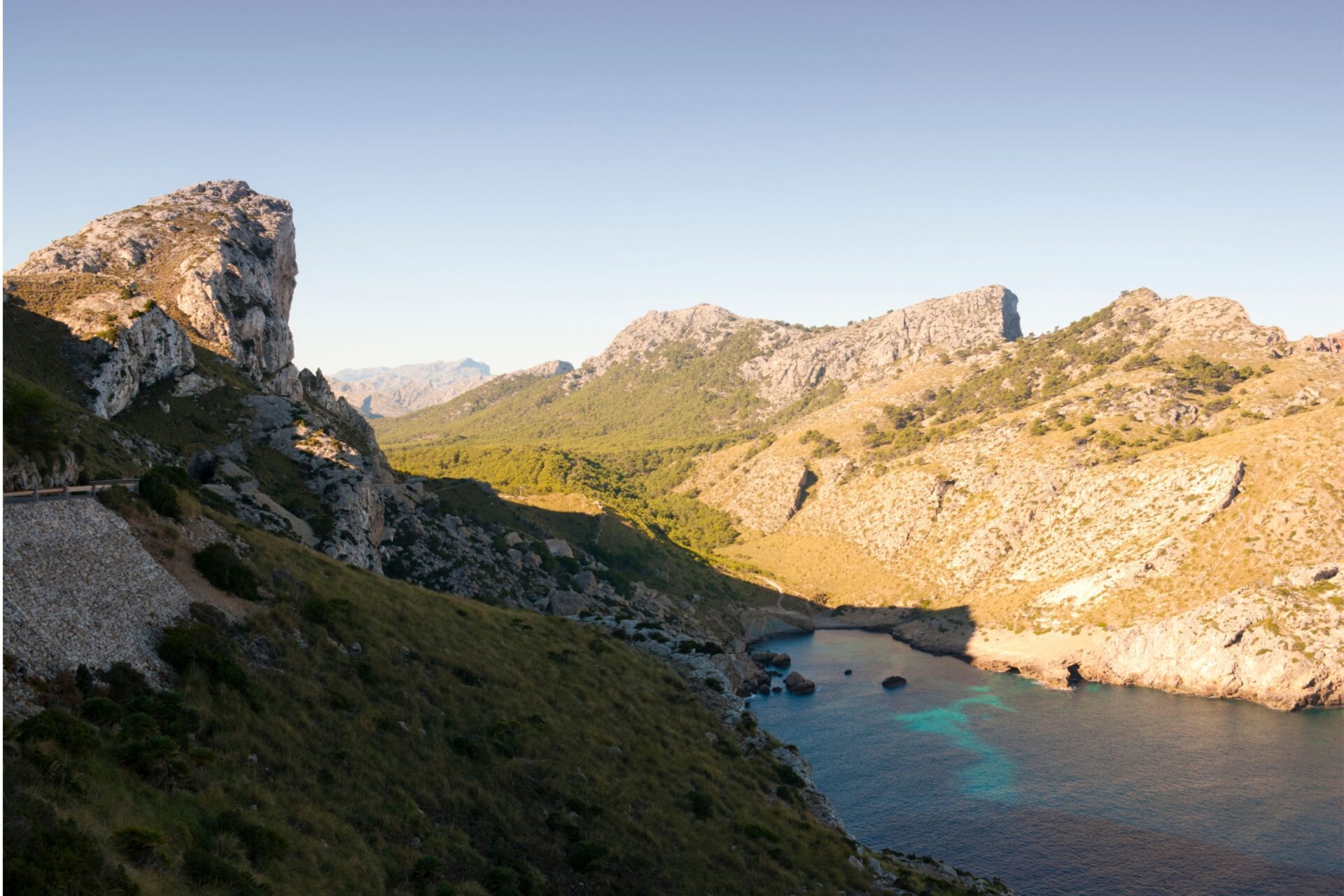
Trails in the Serra de Tramuntana suit just about everyone, from gentle strolls through sleepy villages to routes that zigzag up rugged peaks. Some paths wander past ancient monasteries and sparkling reservoirs. Others climb higher and higher, revealing huge views of the Mediterranean.
Every route brings its own mix of nature and culture, so it’s easy for both beginners and seasoned hikers to find a trail that fits.
Maybe you’re after a peaceful walk among olive trees. Maybe you crave a tough climb with a big payoff at the top. Either way, these mountains deliver.
They quickly became my favorite place to slow down and just be outside. There’s a lot I want to share from those hikes.
Discovering the Tramuntana: Landscape and Character
The Tramuntana Mountains don’t just shape Mallorca’s skyline—they really shape its soul.
Their raw stone beauty and the quiet life among old olive trees and ancient villages pulled me in right away.
Rugged Peaks and Ancient Olive Groves
As I climbed the Tramuntana, sharp limestone peaks pushed up like bones through the earth. Puig Major towers over the rest at more than 1,400 meters.
From many trails, you get open views that stretch all the way to the Mediterranean below.
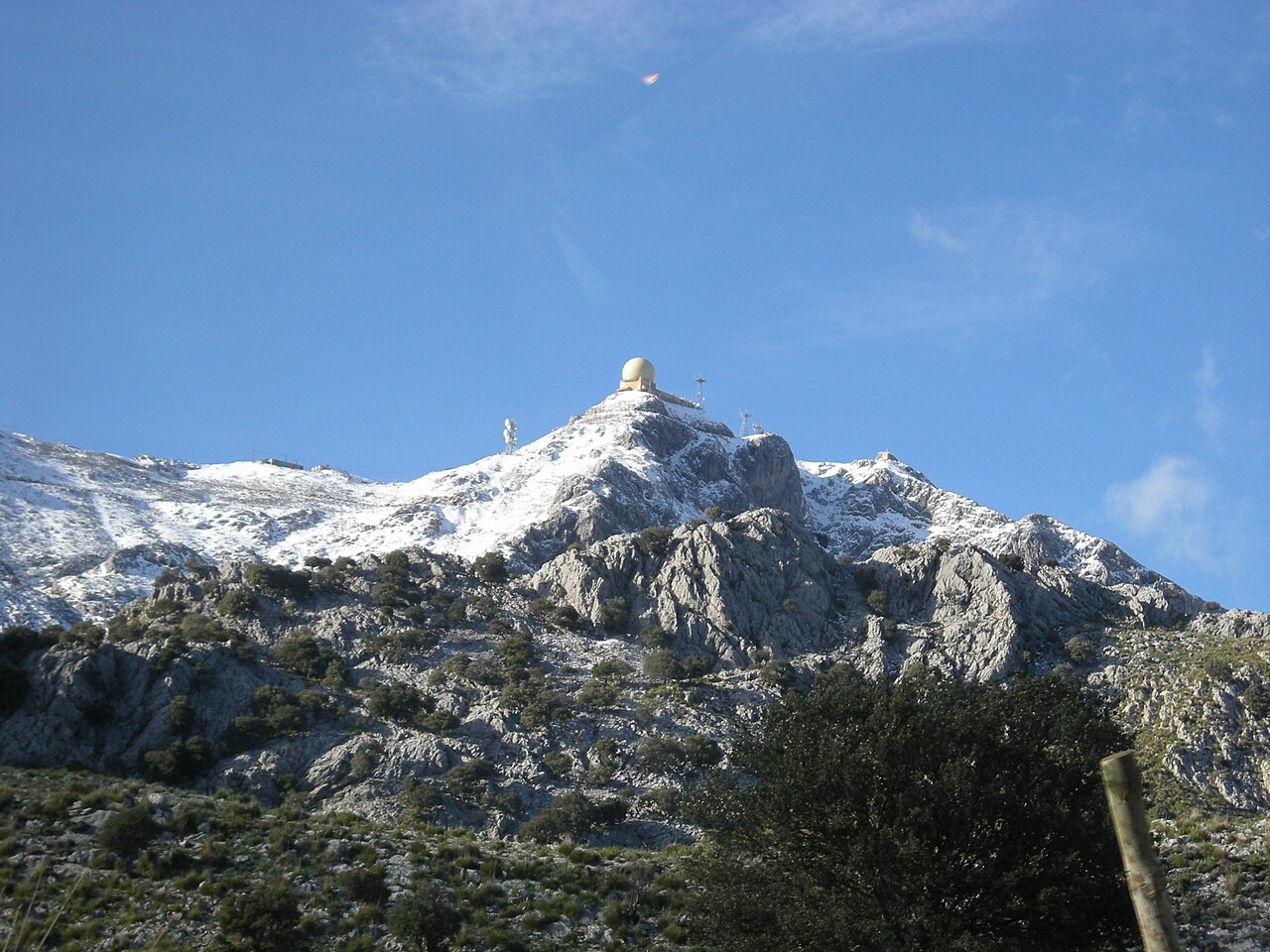
Image Source: Wikimedia Commons
But honestly, the olive groves stole my attention. Some of these trees have stood watch for centuries, their trunks twisted and silvery.
Dry stone terraces zigzag across the slopes, built ages ago to hold the soil and make farming possible. Keeping those old walls standing takes real patience and skill.
I stopped often to listen to the wind in the olive branches. Little birds darted through the shrubs.
Life here moves at a slow, steady pace, shaped by tradition and the quiet passing of seasons.
Key features I encountered:
| Feature | Description |
|---|---|
| Peaks | Stark, dramatic, often over 1,000 meters high |
| Olive Groves | Ancient, terraced, silver-green |
| Stone Terraces | Hand-built, historic, vital to the landscape |
A Living Canvas: Local Art and Architecture
The villages here look like mosaics—stone houses, faded shutters, crooked streets.
Many have old churches at their center, their towers mellowed by years of sun. As I wandered, I spotted doorways framed by flowers and courtyards bright with pottery.
Artists seem to flock to this landscape. Studios and tiny galleries pop up all over Deià, Sóller, and Valldemossa.
Painters and sculptors try to capture the rocky slopes and shifting Mediterranean light, turning mountains and villages into art.
Even the architecture feels like part of a living canvas. Traditional homes use the same warm stones you see in the mountains.
I’d sit outside a café, surrounded by mosaics and stonework, and feel a deep respect for the kind of patience it takes to build this place—every wall and painting tells a quiet story of Mallorcan life.
Essential Trails: Routes for Every Hiker
The Tramuntana Mountains in Mallorca really do have something for every type of walker.
Whether I felt like a gentle stroll or a tough climb, I always found a trail that fit my mood and energy.
Beginner-Friendly Walks with Scenic Rewards
My first hikes here were easy ones, but the scenery blew me away. The walk from Esporles to Valldemossa is a classic for beginners.
Shaded paths wind through ancient olive groves and past those dry-stone walls. I stopped often to take in the valleys below, especially at the viewpoints just off the trail.
Another favorite: the Banyalbufar coastal path. It hugs dramatic cliffs but stays mostly flat, so it’s a safe bet for new hikers.
Benches and picnic spots let me kick back and soak up the blue Mediterranean. Even on a short walk, the scent of pine and salt air sticks with you.
- Tip: Go early or late for cooler temps and softer light—your photos will thank you.
Challenging Ascents for Avid Adventurers
Sometimes I needed a real challenge, so I took on Puig de Massanella. At 1,364 meters, it’s Mallorca’s second-highest peak.
The rocky climb made my legs ache, but the summit view—wow. You can see the whole island from up there.
I met some serious hikers along the way, many heading out on the GR221 Dry Stone Route.
The Cúber Reservoir to Lluc Monastery trail pushed me too. Steep climbs and sudden weather changes kept it interesting.
I passed old monasteries and took breaks at stone refugios. You’ll want good shoes, plenty of water, and maybe trekking poles for these tougher routes.
| Trail Name | Distance | Time | Best For |
|---|---|---|---|
| Puig de Massanella | 12 km | 5-6 hrs | Experienced hikers |
| Cúber to Lluc Monastery | 14 km | 4-5 hrs | Adventure seekers |
Accessible Family Hikes Amidst Olive Groves
When I hiked with family, I picked shorter, well-marked trails.
The walk from Sóller to Fornalutx stands out. It goes through pretty olive groves, with flat stretches that work for beginners and energetic kids.
Arriving in Fornalutx—a village with cobblestone streets and citrus trees—always felt like a reward.
The Alaró Castle route is another good one. Most of it is gentle, though you’ll climb up to the ruins at the end.
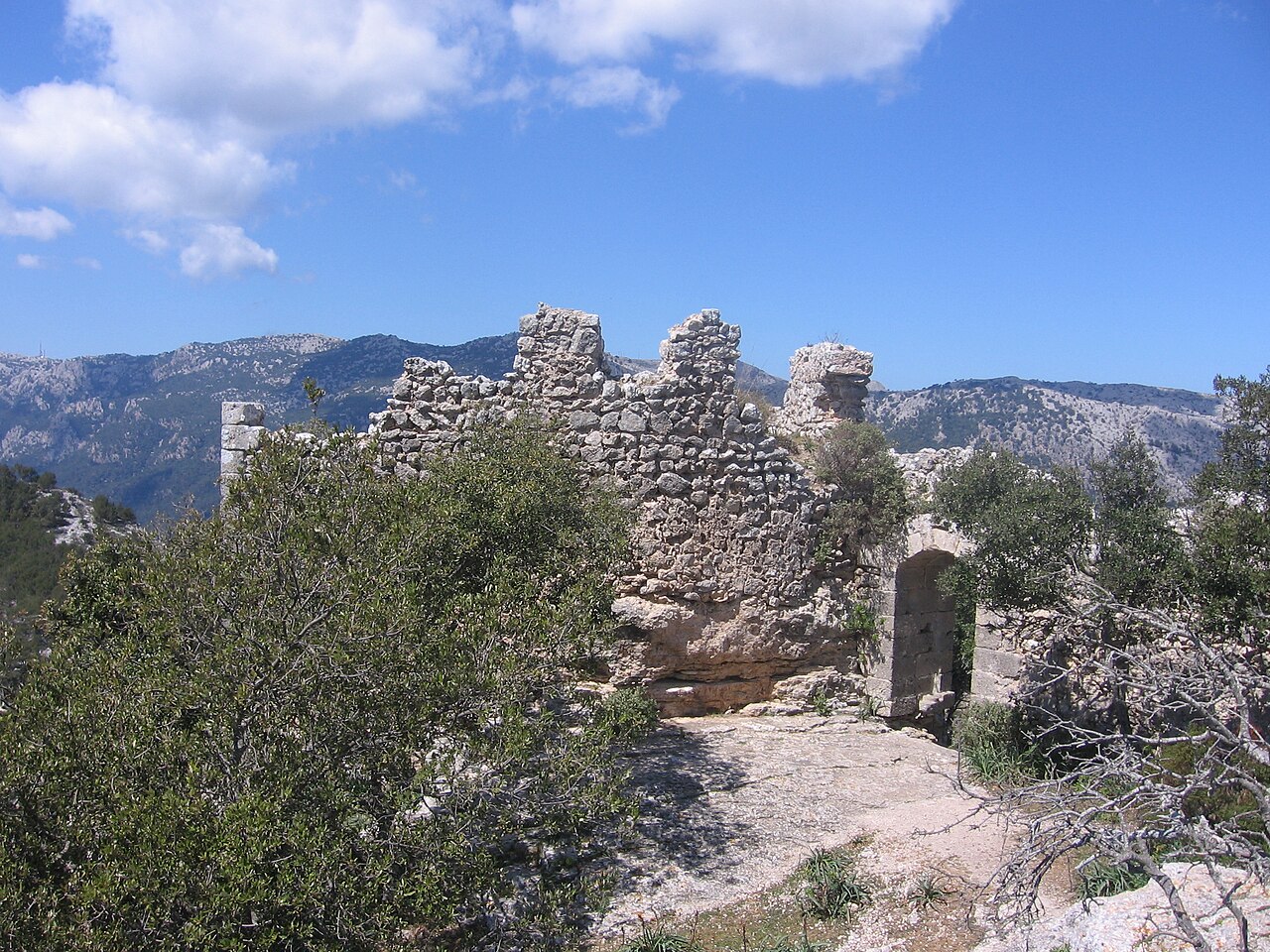
Image Source: Wikimedia Commons
Shady rest spots and mountain views kept the younger hikers cheerful. Sometimes we’d spot sheep or hear the distant sound of goat bells.
- Essentials: Snacks, sunscreen, and extra water—especially in the heat—are a must.
Hidden Gem Paths Away from the Crowds
Some of my best days happened on those lesser-known tracks where I wandered for hours without seeing another soul.
The Camí de s’Arxiduc near Deià felt especially secret. Ancient pine forests, high coastal viewpoints, and that rare quiet—exactly what I needed to escape the crowds.
Galilea village to Es Capdellà is another local treasure. The path weaves through wild rosemary and sunlit terraces.
I watched birds, breathed in the mountain air, and barely saw anyone else.
- Benefits: Fewer people, more peace, and a better shot at spotting wildlife.
- Tip: Bring a simple map or offline GPS—signs can be scarce out here.
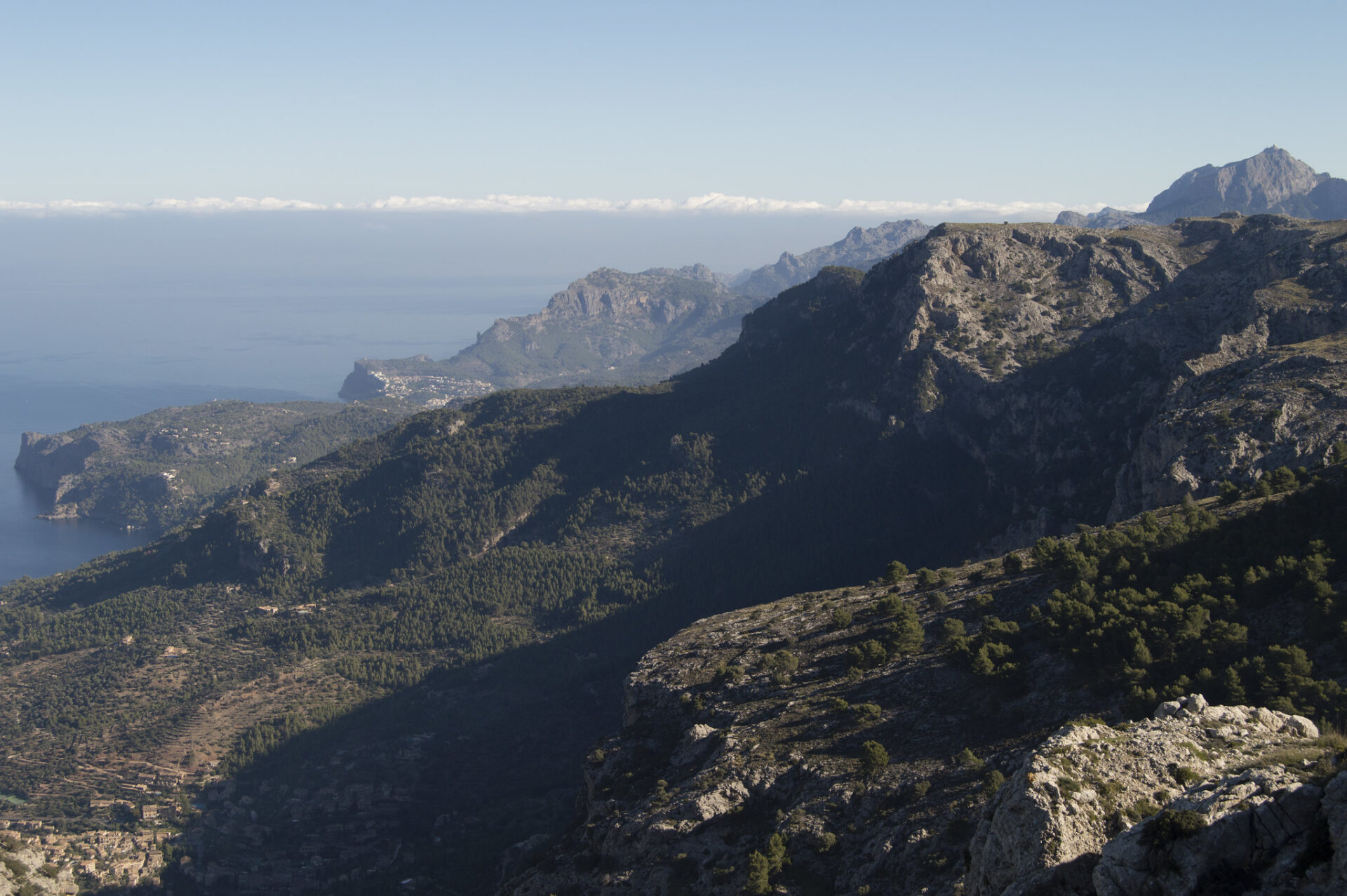
Image Source: Flickr
Villages and Culture Along the Way
As I roamed the Tramuntana trails, every village offered a different glimpse of Mallorca’s heart.
Art, food, and old traditions make these mountain towns just as memorable as the hikes.
The Artistic Soul of Sóller and Deià
Sóller and Deià sit tucked between peaks and forests, and their creative spirit is impossible to miss.
Sóller greets you with stone houses, orange groves, and cafés covered in local paintings. Street artists and galleries add color to the quiet squares.
Deià is famous for drawing artists, poets, and musicians. The rugged cliffs inspired writers like Robert Graves.
I lingered in small studios, chatting with painters about sunsets and mountain mists. The creative energy runs deep here.
Sculptures and murals pop up everywhere, making the towns feel lively and expressive.
If you rest on a plaza bench, you’ll almost always spot someone sketching, strumming a guitar, or just soaking in the golden light.
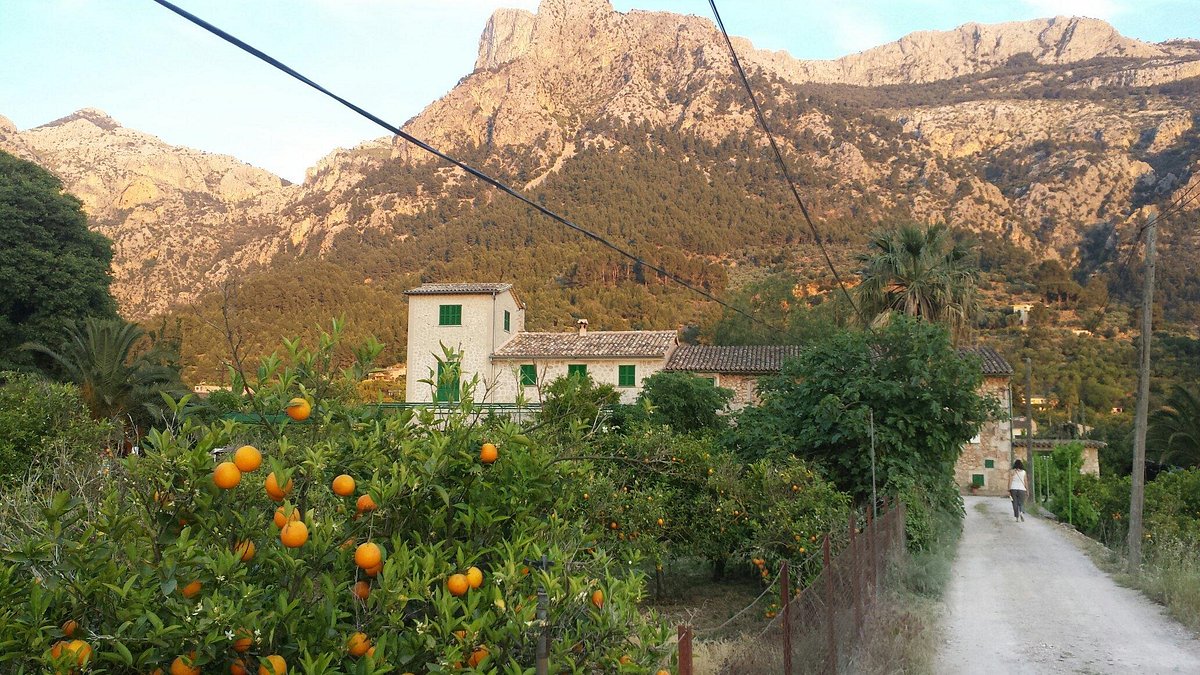
Image Source: Tripadvisor
Sampling Local Cuisine and Olive Oil
Nothing hits the spot like a good meal after a long hike. The villages along the Tramuntana trails serve up traditional Mallorcan dishes.
Restaurants and markets offer rustic meals built around local produce. I devoured pa amb oli—bread rubbed with garlic, topped with salted tomatoes, and drizzled with olive oil.
The mountains are full of ancient olive trees. Some farms let visitors sample their oil, and I learned to pick out peppery, nutty, even fruity flavors.
Hearty stews, fresh fish, and thick slices of local cheese appeared on many menus.
Eating on a shaded terrace, surrounded by the smell of rosemary and olive wood smoke, made every bite feel special.
Traditions: From Flamenco to Football
Mallorca’s villages really love their traditions.
I stumbled onto lively flamenco shows in town squares—music and dance echoing through the evening. Flamenco isn’t native to Mallorca, but it’s found a home in local festivals and gatherings.
The energy is infectious.

Football’s just as much a part of life. Kids kick balls along the cobbles, and every café seems to display a Real Mallorca scarf or poster.
On game nights, people crowd around TVs, shouting at every pass and goal.
Seasonal festivals blend all these threads—music, costumes, and street food—giving you a real taste of the island’s spirit.
Practical Tips for Hiking the Tramuntana Mountains
Hiking in the Tramuntana Mountains taught me to value patience, a bit of planning, and good support—whether it’s from friends, a guide, or sturdy boots.
A little prep makes every trek safer and a lot more fun.
Planning Your Route and Staying Safe
Before I lace up my boots, I take a good look at the trails. The Tramuntana range offers everything from coastal walks to cobbled paths and high peaks.
I check trail distances, elevation, and how long each hike might take. Some routes connect villages like Esporles and Pollenca, winding through olive groves and old terraces. Others stick to the rugged ridges.
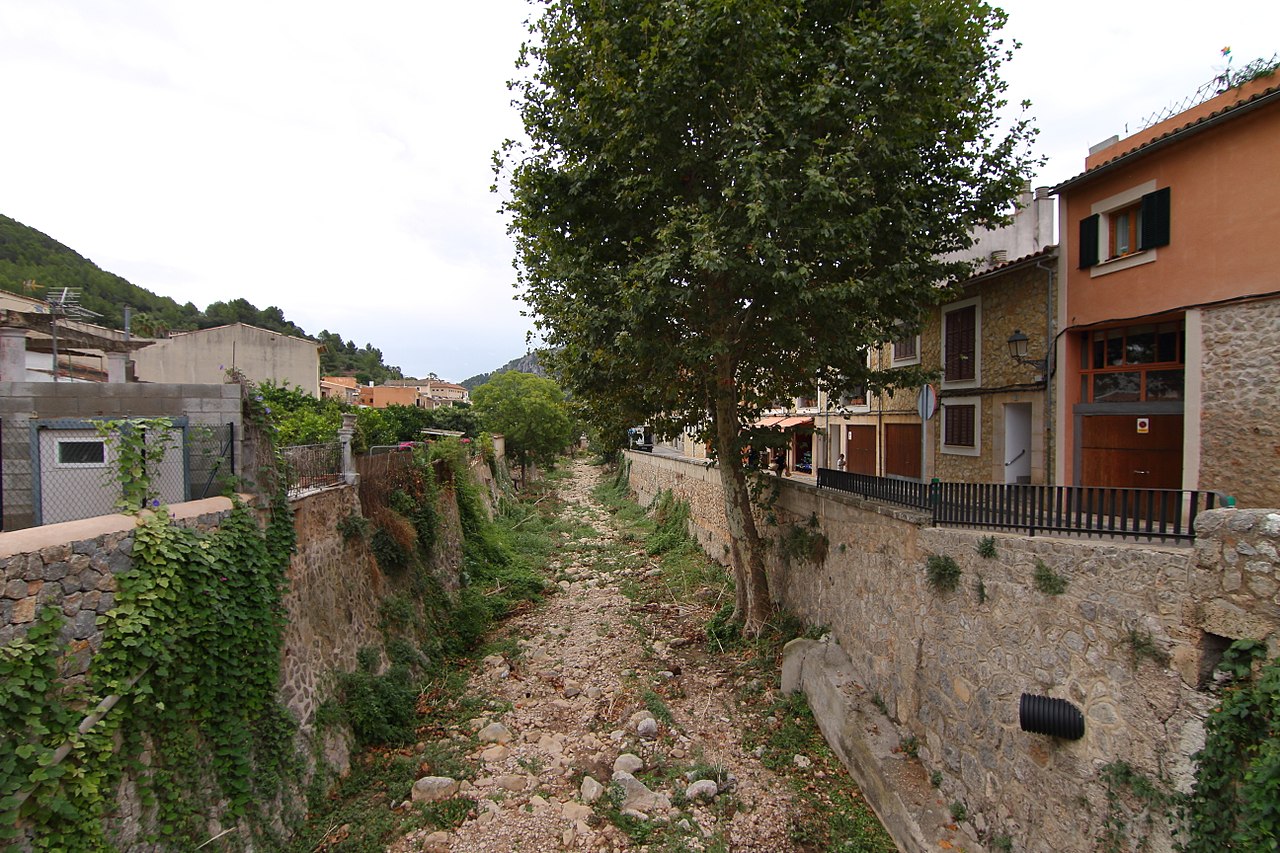
Image Source: Wikimedia Commons
I always bring a printed map or a solid offline GPS app. Mobile service gets patchy in the mountains.
It helps to let someone know my planned route and when I expect to be back, especially if I’m hiking solo.
Mallorca’s weather can change fast. I always check the forecast and have a backup plan.
If I get lost or unsure, I try not to panic—slowing down and retracing my steps or waiting for help usually works out.
Quick Safety Tips:
- Hike with a friend if you can.
- Carry emergency contacts and know the closest villages.
- Stick to waymarked trails and skip the shortcuts.
Gear Essentials and What to Pack
Packing right can turn a tough day into a good one.
I start with solid hiking shoes or boots—some trails are rocky and uneven. Lightweight, moisture-wicking clothes keep me cool, and a light jacket or windbreaker comes in handy if the weather shifts.
A hat, sunglasses, and sunscreen are musts—the Mediterranean sun pulls no punches.
My daypack always holds at least 2 liters of water, a few snacks, and a map. I toss in a small first-aid kit with plasters, blister pads, and any meds I need.
Trekking poles help, especially on steep or cobbled stretches. I charge my phone ahead of time and bring a power bank, just in case.
Packing Checklist:
| Must-Have | Optional but Helpful |
|---|---|
| Sturdy footwear | Trekking poles |
| Water & snacks | Power bank |
| Light jacket | Camera/binoculars |
| Sun protection | Extra layer (if cold) |
| First-aid kit | Notebook or pen |
Responsible Hiking: Leave No Trace
The Tramuntana Mountains are a UNESCO World Heritage site, and I feel responsible for helping keep them beautiful.
I always pack out every bit of trash—food wrappers, tissues, you name it.
I stick to marked trails to protect both the landscape and the stone terrace walls that line so many mountain paths.
I fight the urge to pick wildflowers or take souvenirs.
Instead, I just bring back some photos and a bunch of memories.
I also respect local wildlife and livestock; I keep my distance and never feed the animals.
When I pass through villages, I greet the locals, but I stay mindful and don’t disturb anyone’s property.
Inspirations and Influences Beyond Mallorca
Every hike in the Tramuntana Mountains gets me thinking about how places connect.
Mallorca’s rugged trails, historic stone paths, and welcoming towns remind me of other mountain regions—some close, others much farther from Spain.
Mallorca’s Connections: From Barcelona to Madrid
It’s pretty clear how Mallorca feels linked to bigger cities like Barcelona and Madrid.
When I walk the cobbled mountain paths, I sometimes bump into fellow hikers from these cities.
We swap route stories, share snack ideas, and sometimes end up comparing the food.
Both cities have their own hiking communities and nature escapes.
Still, lots of people from Barcelona and Madrid come to Mallorca for the landscapes and the slower pace.
I’ve noticed that ferries and short flights make weekend hiking trips possible for them.
Barcelona’s urban parks and Madrid’s hills are beautiful, sure, but hiking among old olive groves and limestone cliffs just feels different.
Here’s a quick comparison of hikes near these cities:
| City | Famous Natural Area | Key Feature |
|---|---|---|
| Barcelona | Montserrat Mountains | Unique rock formations |
| Madrid | Sierra de Guadarrama | Tall pine forests |
| Mallorca | Tramuntana Mountains | Coastal views, terraces |
Why Hikers from Vermont and Burlington Feel at Home
If you come from Vermont or a city like Burlington, landing in Mallorca just feels oddly familiar. I’ve talked with hikers from the Green Mountain State—they’ll say the rolling hills and those small, welcoming towns remind them of home.
Mallorca swaps out maple trees for olive groves and trades wooden barns for stone houses. Still, the welcome here? It’s just as genuine.
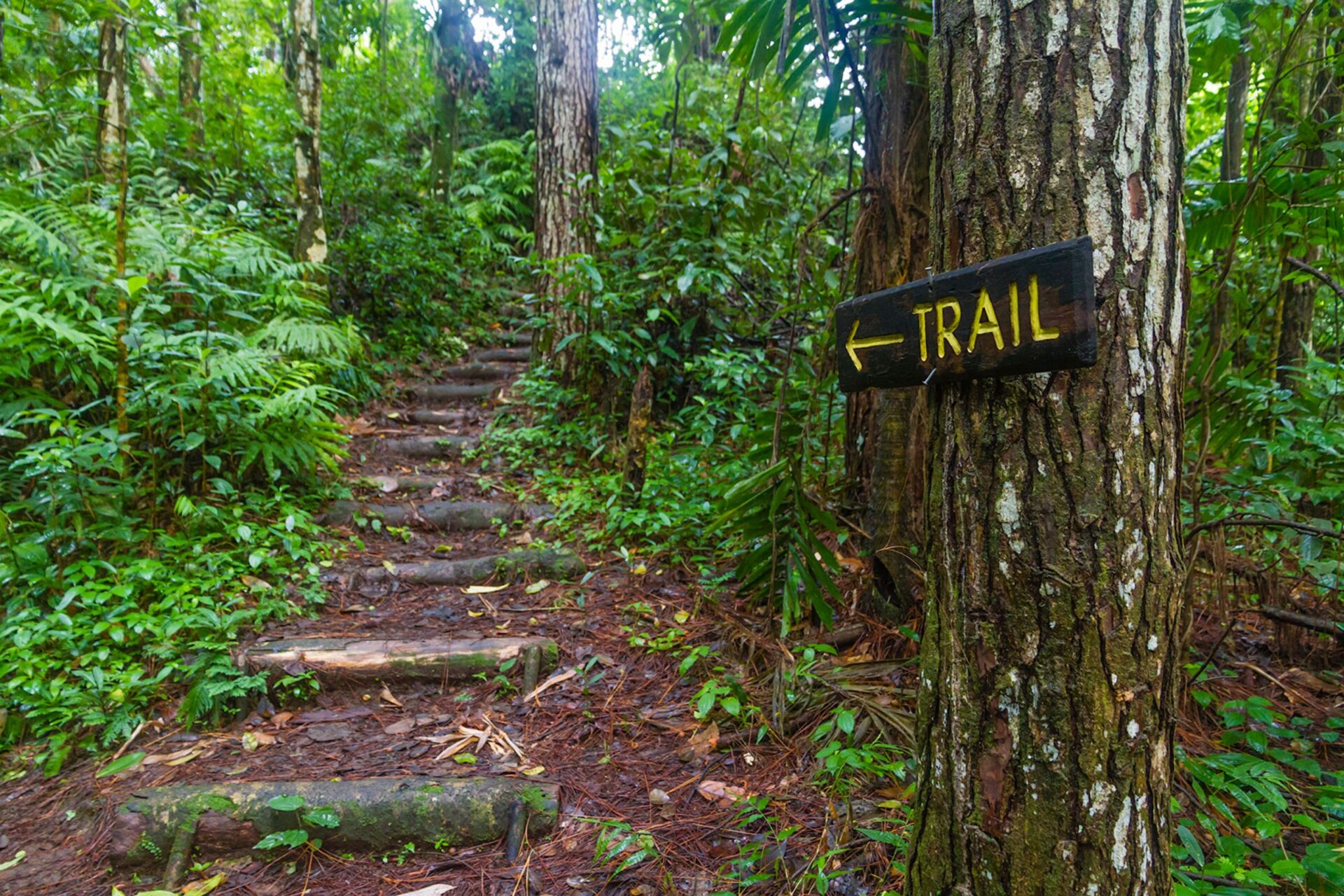
Weather in Vermont can flip fast, and honestly, the Tramuntana range acts the same way. Both places test your patience. You might get sun-drenched peaks after a gloomy morning, or stumble on a hidden spring in some quiet valley.
I notice the sense of community on the trail runs strong in both places.
Trails in Vermont usually wind through forests and open fields. In Mallorca, you’ll pass goat farms or ancient terraces instead. But the spirit? That’s unchanged.
People here and there share a love of nature. They care about how the land gets used and respect the path—whether it’s a rocky route in Spain or a green corridor in New England.
I can’t help but notice these little parallels. They make traveling and hiking less about ticking off new sights and more about finding shared stories and familiar comforts, wherever you end up.


